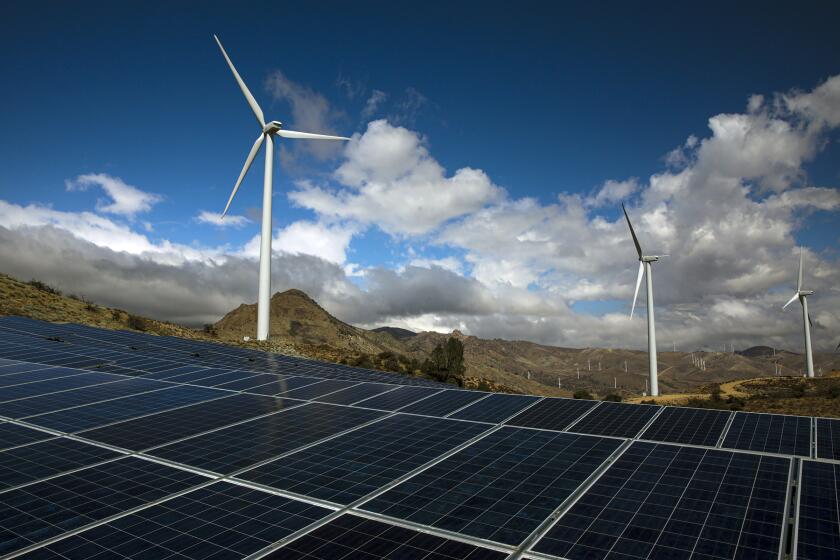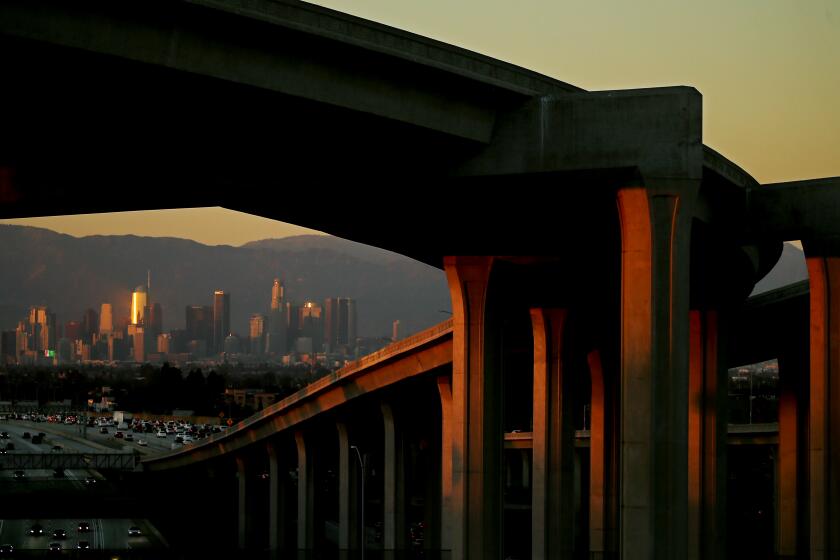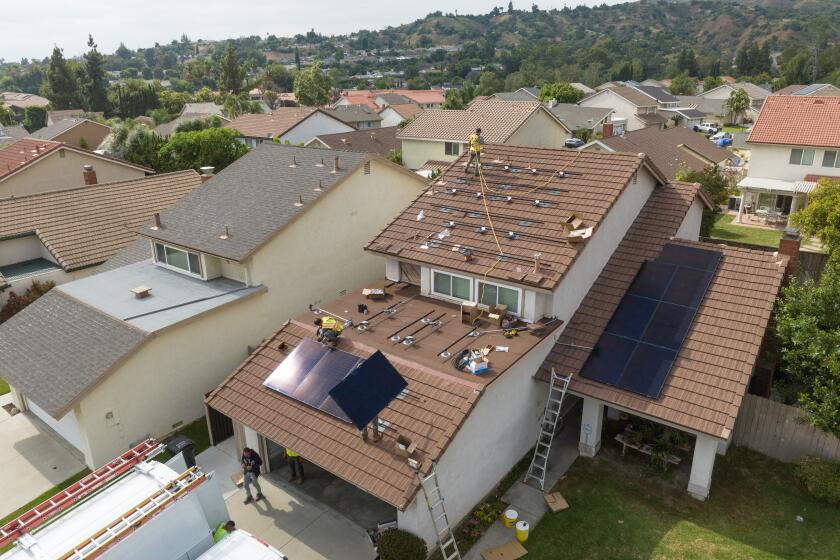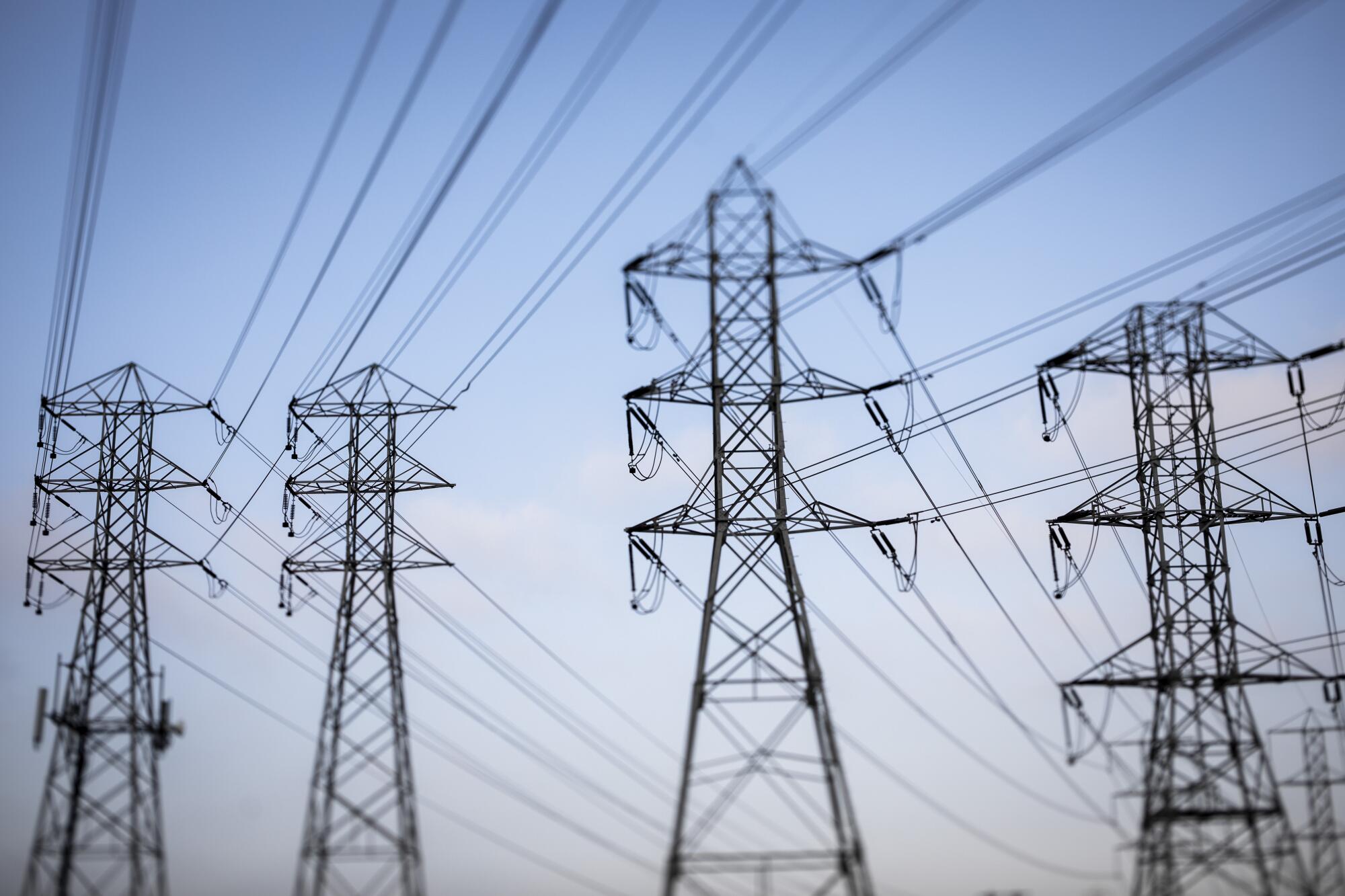
Low-income and non-white Angelenos are critical to L.A.’s transition to clean energy, yet the city is failing to invest adequately in bringing electric vehicle chargers, rooftop solar programs and energy efficiency improvements to their communities, a new report says.
The LA100 Equity Strategies report, released by the Los Angeles Department of Water and Power, UCLA and the U.S. Department of Energy’s National Renewable Energy Laboratory, offers a detailed look at inequities underlying L.A.’s clean energy investments, as well as recommendations to address them. The report builds on a major 2021 study showing that L.A. can reach 100% clean energy by 2035.
Between 1999 and 2022, only 23% of electric vehicle investments, 38% of solar installation projects and 46% of residential energy efficiency incentives from the DWP went to disadvantaged communities, the report found. Those communities are mostly located in South L.A., East L.A., the San Fernando Valley and the Harbor area — places that also bear disproportionate impacts of rising temperatures and worsening climate change.
“The City of Los Angeles — where more than a half-million people live in poverty and most households are renters — faces a particular challenge in reaching 100% clean energy if it cannot provide affordable and accessible solutions for all residents,” the report says. Achieving 100% clean energy will require “bringing everyone along.”
Aggressive and impactful reporting on climate change, the environment, health and science.
City officials lauded the assessment as a road map for a more equitable transition, with DWP’s general manager Martin Adams calling it “the guiding document for how we’ll go about our business moving forward to make sure that we deliver for everyone in Los Angeles.”
Part of those plans includes the installation of at least 5,000 new electric vehicle fast-charging stations in underserved communities over the next five years. That will help get more charging infrastructure to renters, apartment-dwellers and people in multifamily homes, officials said.
“Affording an EV is one thing — being able to charge it is quite another,” said Cynthia McClain-Hill, president of Los Angeles Board of Water and Power Commissioners. She added that investing in charging infrastructure “closes the loop many of our residents need to be full participants in our city’s clean energy future.”
The DWP is also increasing its rebate for the purchase of used EVs from $2,500 to $4,000, for customers enrolled in discounted rate programs.
The plan would help fight climate change and reduce deadly air pollution from cars, trucks and power plants and gas furnaces.
The report underscores that the majority of people who have so far benefited from DWP’s clean energy rebates, incentives and grid updates are higher-income people, homeowners and white people. At the same time, low-income families, renters and people of color face greater energy and transportation burdens.
What’s more, approximately 20% of electric vehicle owners in L.A. are predicted to lack at-home charging access by 2035 — despite the fact that California has banned the sale of all new gas-powered cars by that same year. Of those who lack access, 80% will be residents in multifamily buildings, the report said.
Stephanie Pincetl, a lead author and director of the California Center for Sustainable Communities at UCLA, said the assessment is an exceptional example of national and international leadership, but stressed that there is much work yet to be done.
“Clearly, inequities are historic and they’re deeply embedded in the city’s bones,” Pincetl said. And while the report outlines a number of strategies, “the challenge today is to figure out which ones are the most urgent, which ones are the medium term and which ones are the longer term.”
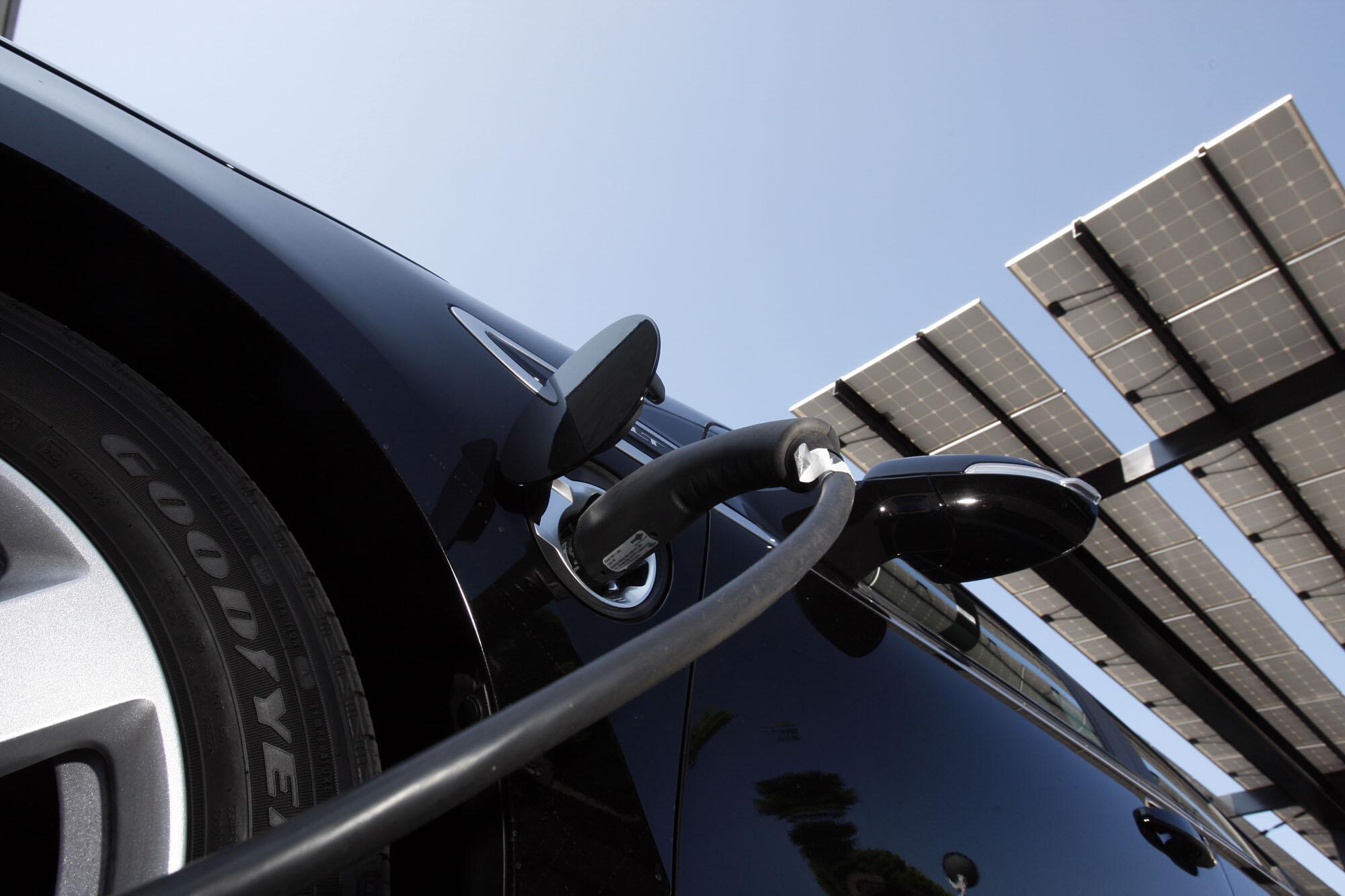
Electric vehicle infrastructure is just one piece of the transition challenge.
Rising utility costs and a lack of capital are also limiting these communities’ access to energy-efficient building upgrades, green jobs and training programs, among other opportunities. Rooftop solar programs have had a limited reach in these areas due partly to low rates of homeownership. Meanwhile, between 1990 and 2021, the DWP has spent most of $340 million in solar net energy metering incentives on white, non-Hispanic, home-owning and wealthier communities, the report found.
Without changes, energy inequities will only increase over time. Under existing structures, average electric bills are projected to increase 79% for all households, and 131% for low-income households, by 2035, the report found.
“Addressing historical inequities requires intentional strategies and a long-term commitment to fairness that includes comprehending past actions and redressing them as well as any current actions that have perpetuated injustices, and meeting inequity with bold action,” it says.
In a report, L.A. City Controller Kenneth Mejia said L.A.’s climate plan lacks specifics and offers little in the way of meaningful metrics.
However, some question where the money for such improvements will come from.
Jack Humphreville, who chairs the DWP advocacy committee for the city’s neighborhood councils, said the agency needs to do more to address rising costs — particularly since it plans to fund some of its clean energy transition through rate hikes for customers. He questioned whether homeowners and commercial customers will bear most of the costs, and what the return on investment will be for EV charger installations and other programs.
“We are seeing mission creep,” Humphreville said. “Since when is the department in the car business? Air conditioning business? Since when is the department charged with righting the wrongs of the past? Yes, decent programs, but how do they benefit the ratepayers and the department?”
Adams, DWP’s general manager, acknowledged that getting L.A. to 100% clean energy will require “billions of dollars” of investments, and that rate hikes are likely inevitable.
“To change what we’re doing, rates will have to go up,” he said. “But this will help to allow everyone a chance to reduce their rates, reduce their bills and be more efficient. And there’s a trade-off — if you’re doing EV, you’re not buying gas, so there is a good balance there.”
He added that the agency is not proposing rate hikes at this time, but it is studying its rate structure.
“The overall plan, beyond just this, is to make sure that when rates go up, they’re spread fairly across the entire city so that no one is disproportionately burdened,” he said.
And community solar, too, for those of us who don’t own our roofs.
Environmental advocates say moving toward clean, equitable energy is imperative for the city’s future.
“This is an energy revolution and evolution,” said Yassi Kavezade, a representative for the Sierra Club. “L.A.’s ambitious, 100% clean energy goal 10 years before the state’s mandate is what Angelenos need to address the grim reality that we have a very brief timeline to avert the worst impacts of the climate crisis and air pollution crisis across Southern California.”
Among the report’s recommendations are interventions to help lower energy bills, such as leveraging funds from President Biden’s Inflation Reduction Act to help install heat pumps and weatherize buildings to be more energy efficient. Universal access to home cooling will be essential as the region faces hotter conditions due to climate change, especially since multifamily building residents — who comprise 56% of the Los Angeles population and 95% of low-income renters — face the highest exposure to dangerous indoor temperatures.
Upgrades to the electric grid will also be needed as the city transitions toward clean energy, with a particular focus on addressing past deferred maintenance and ensuring reliable distribution across all communities. Shared solar projects with low- and moderate-income subscription rates could reduce rates for those customers, while micro-grids and backup power, such as solar storage, can help during emergencies.
The report also recommends more investments in electric bikes, shared EV programs and improved mass transit to help enhance mobility and reduce pollution across the city. Updated state laws could help eliminate some constraints and expand rate and bill assistance programs supporting low-incoming households.
To achieve these and other goals will require long-term partnerships and coordination across city departments and sectors, said Juan Torres, associate lab director at the National Renewable Energy Laboratory, which contributed to the report. He noted that the city’s landmark 100% clean energy study kicked off similar studies in places around the world, including Lithuania and Puerto Rico.
“Make no mistake, people are watching what happens here,” Torres said. “The world is watching what happens here — and following your lead.”
Toward a more sustainable California
Get Boiling Point, our newsletter exploring climate change, energy and the environment, and become part of the conversation — and the solution.
You may occasionally receive promotional content from the Los Angeles Times.

